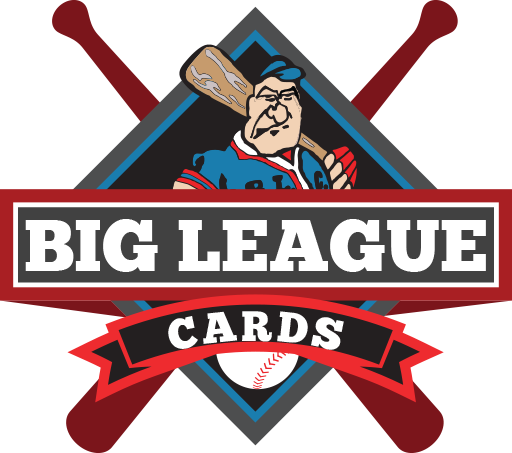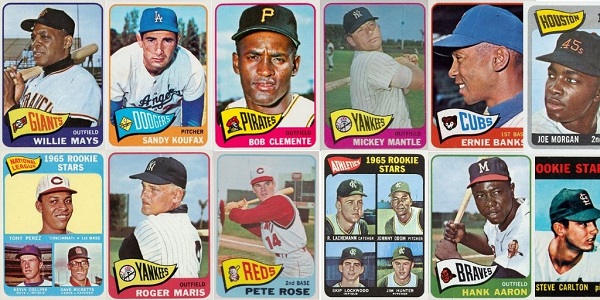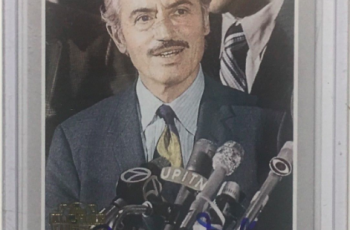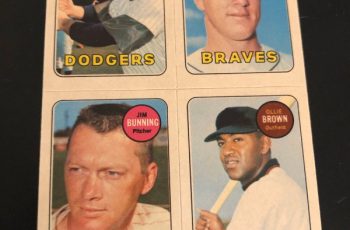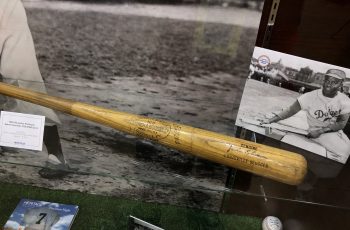Inside the Pack: Now is a Great Time to Start Your Vintage Collection
I love the joy of opening modern packs as much as the next person. Prospecting and investing excites me too. But for me, nothing beats the thrill of adding a really cool vintage card to my collection. If you’ve followed this blog for a while, you know that vintage is my wheelhouse. The time has never been better for it to be your wheelhouse, too.
Why do I say that? As you’re well aware, every major sport is paused right now, with no firm end in sight. That means there’s nothing exciting that current players could possibly do, except for get medical treatments, like Chris Sale’s Tommy John surgery — and that’s the wrong kind of exciting. For all intents and purposes, Mike Trout is just as inactive as Willie Mays right now, so if you’ve wanted to take the dive into vintage, now is the perfect opportunity to do so.
Another reason vintage is enticing right now is that given the economic uncertainty of the moment, prices are fairly stagnant and could fall in the short term. The vintage card market has typically outpaced stocks and mutual funds over the past decade, and with the market slowing, it’s an ideal opportunity to enter the fray.
You might be interested in collecting vintage cards but have no idea where to start. That’s totally okay and expected. Here are some suggestions to get you up and running.
- Decide what you want to collect. It’s imperative you decide how to focus your collection, or else you’ll have random cards with no direction and your collection won’t hold your interest for very long. There are so many different paths you can take when collecting vintage cards: you could collect a specific player; a team; a certain set; a category of player like league leaders or Hall of Famers or players from Florida; or you could have a “type collection,” meaning you work on getting one card from each set that’s been catalogued. It’s okay to have multiple directions in your collection, but you should avoid having no direction at all — you should always be able to explain to someone what you collect, without having to answer simply “vintage cards.”
- Learn about what you decide to collect. There’s a wealth of information on the internet, and I’m constantly amazed at how much knowledge about cards that are 50, 75, even over 100 years old is out there. You will likely never know more than some of these experts, but there’s no reason you shouldn’t try to become an expert in your field. If you’re collecting a player and you want to learn more about him, a great place to start is the SABR BioProject. (Note: Another great resource would be to watch Ken Burns Baseball, which is now streaming for free on PBS and also streams on Amazon Prime Video.) For sets, a nice starting point is PSA CardFacts, which shows a checklist, photo, and brief description for all sets in their database. Old Cardboard does something similar. Another great place I spend a lot of time is Net54, a popular vintage message board. The knowledge of the collectors there is unparalleled and I’ve learned a ton just by osmosis. You can also buy and sell on the site.
- Set a budget along with realistic goals. You can spend a ton of money putting together an incredible collection, or a ton of money on a single card; you can also put together a great collection on a very tight budget! Decide what you want, set a price, and research if it’s possible. If you want a playing-days Babe Ruth card for less than $200, you can get one! You can also get one for $900, one for $1,500, one for $10,000 — the choice is yours.
Over the next few weeks, I’ll focus on some tips for collecting vintage cards. We’ll look at different types of vintage cards in different price ranges; underrated and under-appreciated sets that get you bang for your buck; ways to collect on a budget; and resources you can use to help you in your journey.
